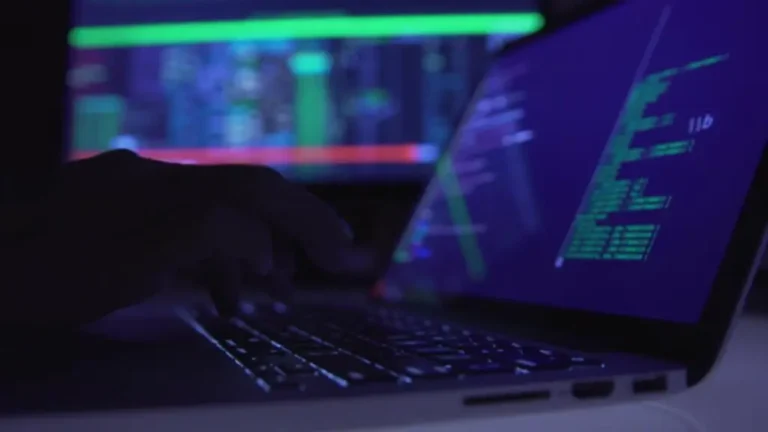So I was scrolling through some charts the other day, and something felt off about the way I was tracking tokens. You know, it’s easy to get sucked into the hype without real-time insights. Wow! Suddenly it hit me: if you’re not watching price alerts and volume spikes closely, you might miss the boat entirely.
Let me tell ya, price alerts are way more than just annoying notifications. They’re your early warning system, your gut check in the chaos of DeFi trading. Initially, I thought I could eyeball everything manually, but after a few painful missed pumps (and dumps), I realized automation was non-negotiable. Seriously?
Trading volume? That’s the heartbeat of the market. When volumes surge, it usually means somethin’ big is about to happen. But here’s the kicker — not all volume is created equal. Sometimes high volume is just bots and wash trading messing with your head. You gotta dig deeper, look at liquidity pools, and understand what’s really driving those numbers.
Liquidity pools, oh boy. They’re like the gas station for your trades—without enough fuel, your transactions stall or get eaten alive by slippage. My instinct said, «Ignore the pool size and you’re toast.» Actually, wait—let me rephrase that. Pool size matters, but so does the token pair’s balance and how recently it’s been updated.
On one hand, it seems straightforward: high liquidity equals smooth trades. Though actually, you gotta watch out for pools that look big but are dominated by one token, which can cause wild price swings. It’s a bit like a shallow pond pretending to be a lake.
Okay, so check this out—I’ve been using the dexscreener official site for a while now, and it’s a game changer. Not only does it spit out price alerts in real time, but it also shows detailed trading volumes and liquidity pool stats that are super fresh. Honestly, I wish I’d found it sooner.
Here’s what bugs me about some other tools—they either overwhelm you with data or give you stale info that’s useless when you’re trying to catch a fast-moving token. Dexscreener nails that balance, giving you just enough info to make quick, informed decisions without feeling like you’re drowning.
Trading volume spikes often signal momentum, but the why behind those spikes can be tricky. Sometimes it’s organic trader interest; other times, it’s whales moving the market or, worse, manipulators testing the waters. I’m biased, but combining volume data with liquidity pool health paints a clearer picture of token sustainability.
Imagine you see a token with soaring volume but shrinking liquidity pools. Hmm… something’s fishy. That’s a red flag for potential rug pulls or pump-and-dump schemes. Conversely, if both volume and liquidity are rising steadily, it’s a sign of growing trust and adoption.
But here’s the thing. Even if liquidity pools look healthy, you gotta consider the tokenomics behind them. Pools can be artificially inflated by locked tokens or incentives that might dry up soon. So, volume and liquidity are necessary, but not sufficient alone to trust a token fully.
One time, I got bitten by ignoring that nuance. A token had great volume and liquidity, but the team had just finished their initial liquidity mining program, and the pool was about to shrink fast. I missed that window and saw slippage eat my gains. Lesson learned the hard way.
What really excites me is how price alerts can be tailored to catch these subtleties. For example, setting alerts that combine volume thresholds with liquidity changes can catch early signs of trouble or opportunity, way before the average trader notices.
Check this out—using the dexscreener official site, I set up alerts that fire when volume spikes coincide with a liquidity pool imbalance. That combo tells me when to dig in or step back. It’s like having a seasoned trader whisper in your ear.
Sometimes, I get overwhelmed by all the noise in DeFi, but these tools help me cut through it. And yeah, it’s not foolproof—markets are wild beasts—but layering price alerts, volume, and liquidity data definitely stacks the odds in your favor.
Now, a quick tangent: many folks overlook how liquidity pools impact slippage and trading fees. When a pool is shallow, your trades can literally cost you more than the token’s price move. So even if price alerts say “go,” you gotta check the pool depth or you might end up regretting it.
Another neat insight: some tokens have multiple pools across different DEXs, each with varying liquidity and volume. Tracking these across platforms manually is a nightmare. That’s where comprehensive dashboards, like what you find on the dexscreener official site, really shine.

Honestly, the more I dive into this, the more I see that relying solely on price charts is like driving blindfolded. Price alerts are your headlights, volume is the engine revving, and liquidity pools are the road condition. Neglect any one, and you’re asking for trouble.
So, what’s the takeaway here? Well, for DeFi traders and investors, real-time price alerts combined with a keen eye on trading volume and liquidity pools aren’t just helpful—they’re essential. They help you sniff out opportunities and dodge traps in an ecosystem that moves faster than a New York minute.
And yeah, I’m not 100% sure this is the perfect recipe—DeFi’s always evolving, after all. But if you’re serious about navigating these waters, you owe it to yourself to get cozy with these metrics. Oh, and by the way, tools like the dexscreener official site make that way easier.
In the end, trading in DeFi isn’t just about spotting the next moonshot; it’s about understanding the underlying mechanics that drive token health. Price alerts get you in the game early, trading volume tells you who’s playing, and liquidity pools make sure you can actually move when the time comes.
So next time you’re staring at your screen, waiting for that perfect entry or exit, remember: it’s a dance of numbers and timing, of volume and liquidity, all coming together in real time. And if you’re not tuned into those signals, well, you might just be dancing alone.




